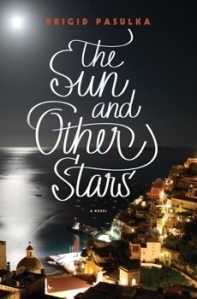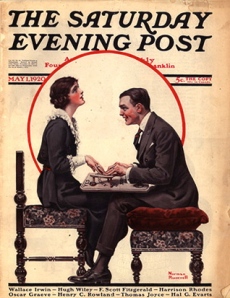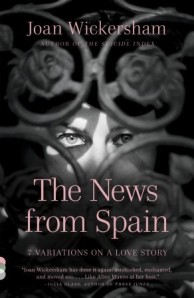
Any reviewer who expresses rage and loathing for a novel is preposterous. He or she is like a person who has put on full armor and attacked a hot fudge sundae. — Kurt Vonnegut
There’s been a lot of controversy recently about negative book reviews. The New York Times Book Review tackled this topic a couple of weeks ago, with opposing viewpoints presented by Francine Prose and Zoe Heller. Prose asks, “Why would a sensible writer ask people not to buy a book? If the novel, as we also hear, is moribund or dead, why drive another nail into its sad little coffin?” Heller counters with the argument that authors “write for other people. They write to have an effect, to elicit a reaction . . . they are not kindergarteners bringing home their first potato prints for the admiration of their parents, but grown-ups who have chosen to present their work in the public arena.”
So, if a critic has a negative reaction to a book, should that reviewer decline to publish the review? This is what Prose advocates: “I began returning books I didn’t like to editors. I thought, life is short, I’d rather spend my time urging people to read things I love.” I sympathize with her point of view. As a bookseller and book blogger, I’d prefer not to spend time telling people about books I found pretentious, or boring, or poorly written. (But if anyone asks me, I’m happy to oblige! I have to maintain credibility.) However, I’m not a professional book critic. I look to critics such as Prose and Heller to provide me with guidance. When I read a book review, I want to see evidence that the reviewer is a critical thinker. If I wanted to see “5 stars!!! Best book ever!” I could look at Goodreads.
Fewer and fewer newspapers and magazines publish book reviews; in fact, many major newspapers have eliminated their book sections. The Chicago Tribune reinvented their book section in 2012, calling it “Printers Row” and making it available only as a supplementary print or digital subscription. It’s described as “the Chicago Tribune’s literary journal, fiction, and membership program”. I appreciate that the Tribune is making an effort to keep literary criticism alive in a major newspaper. In fact, Printers Row doesn’t seem to have any problem publishing negative reviews. I just wish they’d agree with me more often on which books to review negatively! We are definitely not on the same page, so to speak.

A case in point is the recent review of The Sun and Other Stars, by Brigid Pasulka (a Chicagoan), written by Troy Jollimore, a poet, philosophy professor, and book critic. Jollimore claims that the novel shows a “preference for sentimentality over real emotion”. Calling a literary novel “sentimental” is fairly harsh. But how does a critical reader determine if a novel is sentimental? Jollimore tries to back up his claim with examples from the novel; for instance, he states that the tragic events in the novel are “plot devices” that are “exploited” to move the story forward. Hmmm . . . sounds a little bit like Supreme Court Justice Potter Stewart defining pornography by saying “I know it when I see it”. Aren’t all tragic events in fiction plot devices to a certain extent?
My response to the novel could not have been more different. I found the novel genuinely moving and the characters well-developed and believable. The Sun and Other Stars takes place in a small village on the Italian Riviera. Etto, the protagonist, is the 22-year-old son of the village butcher. His twin brother, a “calcio” (“soccer”, in American parlance) star, has recently died in a motorcycle crash and his grief-stricken mother committed suicide not long afterwards. Etto and his father exist in their own separate orbits, unable to connect with each other. When Yuri, a famous Ukrainian calcio player, comes to San Benedetto for the summer, everything changes for Etto and his father — especially after Etto meets Yuri’s beautiful sister.
The book, which is in many ways a love letter to all things Italian, takes its title from the final lines of Dante’s Divine Comedy:
But already my desire and my will
were being turned like a wheel, all at one speed,
by the Love which moves the sun and the other stars.
Just as Dante survives the horrors of hell and comes to know God’s love, so does Etto survive despair and grief and come to know love again. Calcio, which had separated him from his father and his fellow villagers, brings them together. Yes, the story has all the makings of a romantic comedy, but it never becomes hackneyed or predictable. Brigid Pasulka gives Etto a completely original and endearing voice, filled with melancholy and black humor.
The first knock of the morning plinks against the window, the start of the procession of nonne on their way to mass. Nonne, nonne, nonne, and more nonne. This is what sociologists call the aging of Europe, and Liguria’s demographics are the most top-heavy of them all, crammed with nonne, nobody stupid or naive enough to bring more babies into this world. They clutch each other’s arms, crossing the front windows so slowly, you can see the gossip gathering in clouds over their heads . . . the nonne take to the streets every morning without fail. After all, they’re in training. They must have strong backs to prop up the 80 percent of us who have stopped hedging our bets with God.
Besides being the only man in San Benedetto who isn’t obsessed with calcio, Etto is set apart in another way: he is half American. Calcio brought his parents together; they met at a soccer match and fell in love despite a language barrier. But art is what bonded mother and son:
Mamma used to be as passionate about art as Papa is about calcio. It was the reason she came to Europe in the first place, because she said she was tired of learning art history from slides, and tired of being in California, where there was nothing older than she was. . . She could make any museum interesting, even when I was a kid. She would take me around to each sculpture or painting as if she was introducing me to old friends.
Etto decides to paint a replica of the Sistine Chapel in his old high school, replacing the Biblical figures with San Benedetto villagers. He says, “You are probably shaking your head, thinking, what kind of deficiente thinks he will be able to paint a copy of the Sistine Chapel on the ceiling of a classroom? What kind of arrogant stronzo?” This final tribute to his mother enables him to start coming to terms with the grief and anger he feels over her death.
Readers will notice that Italian words are sprinkled throughout the novel without italics — or explanation. At first, I found this slightly distracting — and then, as I learned their meanings, I found it brilliant. Etto is bilingual, and most likely thinks in both Italian and English. Pasulka’s use of language in this way enriches his voice and makes him seem even more real.
Obviously, the Printers Row reviewer didn’t share my enthusiasm for The Sun and Other Stars. Besides missing the genuine emotion that was so evident to me, he missed the beauty of the language and the originality of the story. I thought Pasulka masterfully combined love, tragedy, art, and sports to create a wonderfully inventive novel.
To read the full article about the pros and cons of negative book reviews, click Do We Really Need Negative Book Reviews?
















